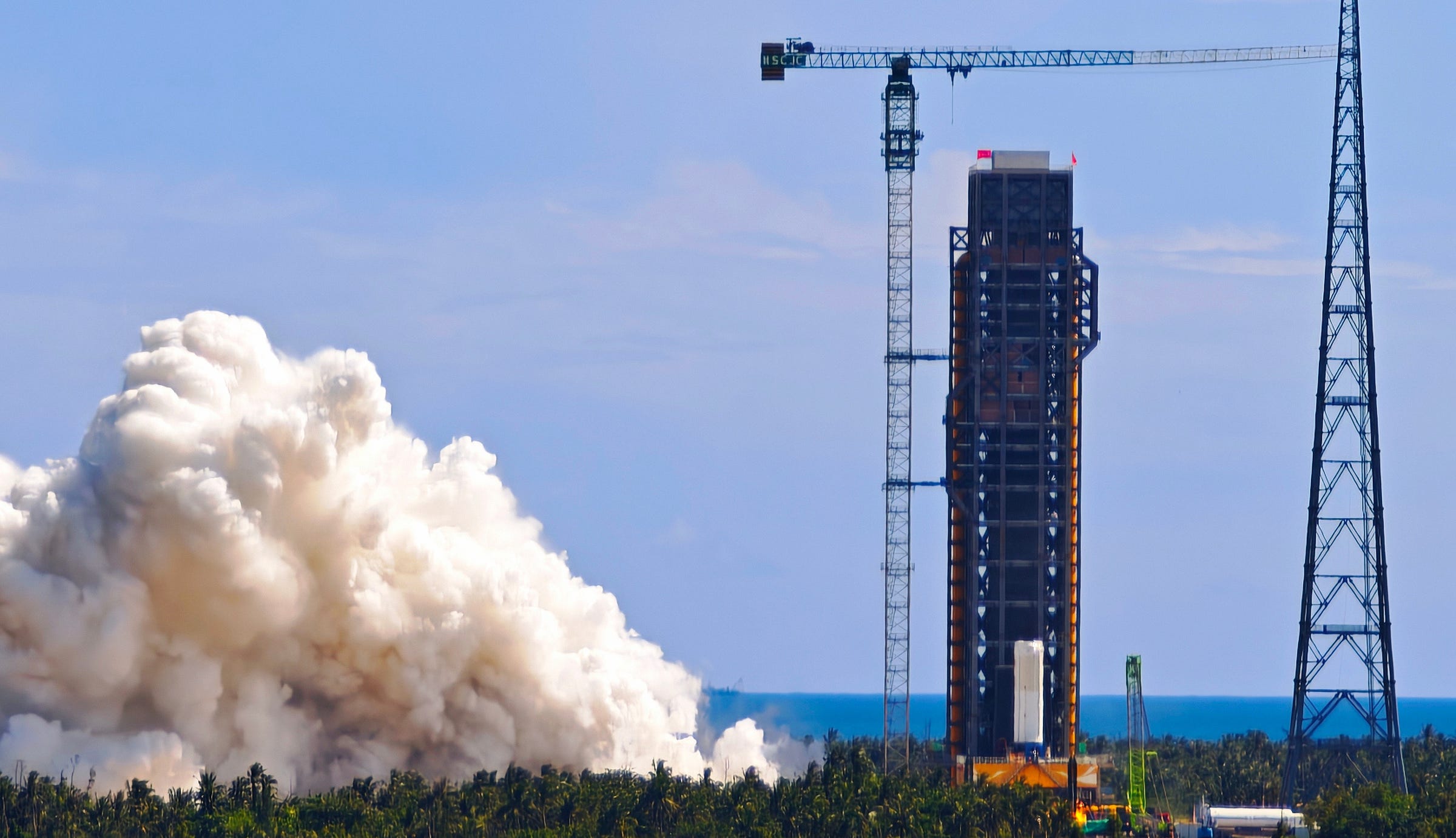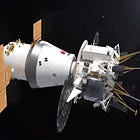Long March 10 Completes Second Static Fire
Engine restarts were performed during the test firing.
For the second time, the China Academy of Launch Vehicle Technology and the China Manned Space Agency have fired up the Long March 10 series static fire test article, following an earlier one in August.
This test took place on September 12th at 15:00 pm China Standard Time (07:00 am Universal Coordinated Time) with all seven YF-100K engines firing, followed by a restart of several, for a total stated cumulative firing time of 320 seconds (5 minutes and 20 seconds)1. The firing once again took place at Launch Complex 301, the Long March 10 series’ dedicated launch pad at the Wenchang Space Launch Site.
According to the involved enterprises, today’s firings verified the parallel working of the seven engines at various low and high throttle settings, as well as understanding hardware stress while gimbaling. After the test, the China Manned Space Agency noted the following regarding the two tests performed:
“To date, the two planned tethered ignition tests have been completed, comprehensively verifying the performance of the rocket's first-stage seven-engine power system and the correctness and reliability of the recovery phase operating procedure design, marking a breakthrough in the development of the prototype of the Long March 10 series carrier rocket.”
“The tethered ignition test of the Long March 10 series of launch vehicles is carried out in steps according to the idea of gradual and step-by-step verification, focusing on the two goals of performance verification of the power system of the seven-engine parallel engine of the first stage and recovery and reuse verification.”
If there are any problems with this translation please reach out and correct me.
It’s unclear which engines were restarted during the secondary parts of the firing, but based on my understanding of the Long March 10A’s reuse plans and engine choices, four outer engines may have been restarted (to simulate an atmospheric entry burn), followed by a single engine (to demonstrate a landing burn), based on the fact there was three separate firings. With the restarts demonstrated, the China Academy of Launch Vehicle Technology is building up toward a possible hop test with the static fire article (hardware attachment points for modifications are said to be under the tarp secured on top of the article).
With the second static fire, China’s crewed lunar program is reported to be progressing smoothly, having completed an abort test for the Mengzhou capsule as well as take-off and landing tests of the Lanyue lander in an extraterrestrial gravity simulator. Additionally, both Long March 10 series rockets, the single-stick two-stage Long March 10A2 and triple-core three-stage Long March 103, are progressing toward their debut flights in 2026 and early 2027, with their engines already gaining flight experience elsewhere.
I believe, based on test footage, that this is adding together the firing times of all of the YF-100K engines.
Dedicated to low Earth orbit tests of lunar mission hardware, the Tiangong Space Station, and commercial missions. The rocket is able to lift up to 18,000 kilograms into low Earth orbit.
Dedicated to the crewed lunar landing program and able to send up to 27,000 kilograms on a trans-lunar trajectory.





